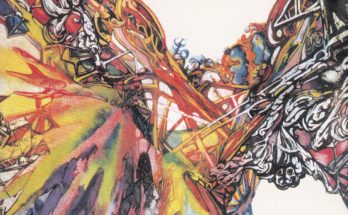By Rodrigo Díaz, José María Moreno, and Bernardo Moreno
What words can define the ways to kill oneself? Some come to mind. Defenestration, to throw or be thrown out of a window. Immolation, a sacrifice performed for a greater cause. Hara-kiri, the Japanese ritual suicide by evisceration. Kamikaze, suicidal attack. Euthanasia, planned and assisted suicide. Overdose, suicide by drug abuse. The concept of suicide calls for careful pondering. What was the intention of one who commits suicide? To alleviate pain or sorrow, seek vengeance, nullify shame, disgrace, desperation, guilt, or perhaps to secure honor? Could it be only a tendency, a fad? What about collective suicide? How far is one willing to go to be accepted in a group? How about those rituals where, out of honor, it is just and necessary to take one’s own life to please the gods and resume the cycle of life? What about the monks of the Far East that lose their life while in nirvana? And Romeo and Juliet and the romantic reading behind love and suicide? Or how about some of the greatest artists of late? Kurt Cobain, shot in the face. Ian Curtis, hanging by a beam while listening to Iggy Pop. Janis Joplin, opioid overdose. Chris Cornell, found dead in his hotel bathroom after what turned out to be his last concert. How many teenagers, scared of reality, have taken this route? It can be justified, it can be a mistake, or it can also be an act of self-determination. Suicide, in the end, seems to be a way out, or the only way out, for many.
“MTV Unplugged in New York,” Nirvana, 1994
This is, according to most, is the best edition of this musical saga invented by MTV, and there are enough reasons for considering so. Released five months after Kurt Cobain´s suicide, and 30 years after it was first aired, this album feels like a prophecy of what would be the great grunge tragedy. Standing on a stage filled with flowers and candles—funeral like—Seattle´s quartet (in this show they announced Pat Smear as their new guitarist) gives us a new facet of Nirvana. Stripped of distortions, punk riffs, and furious drumbeats, the 14 tracks of this album rise out of tense serenity and melancholy, shedding hidden and obscure energies, leaving in the hands of the auditorium a bomb that never actually explodes. Instead of playing their greatest hits in acoustic versions, as many expected, the band played what were—up to that moment—unknown songs. “This is off our first record; most people don´t know of it,” says Cobain at the beginning of the session, setting the tone for what’s to come. There are great covers of The Vaselines, Bowie, Meat Puppets, and, of course, the unforgettable closing, “Where did you sleep last night,” originally by Lead Belly. If you haven’t listened to this record, I don´t know what the hell are you waiting for.
“Paddleton,” Alexandre Lehmann, 2019
This is a profoundly touching film about the loneliness of two grown men—solitary people and neighbors who create a deep friendship in between pizzas, movies, and a made-up game that they play in the parking lot of a forgotten supermarket. The script, written by Lehmann and Duplass, the honest acting by Ray Romano and Duplass, and the directorial achievement of Lehmann, round up this dark comedy about euthanasia, cancer, desperation, sadness, and the gratifying humanization of two common people who only have each other as friends and companions until the very end. “Paddleton” is a great recommendation if you are searching for the humane side of life, the empathy that we can all share and cherish. Life is not only about competition, ambition, power, and money; there is also—and there should always be—friendship, love, and compassion.
“Essays Critical and Clinical,” Gilles Deleuze, 1993This text by the greatest French philosopher of the 20th century—who at the end of his days decided to throw himself out of his apartment window because of unbearable chronic ailments—is some sort of anthology of an editorial project that never really materialized: philosophy as literature. What is literature for Deleuze? An aesthetic expression of existential powers, ways of being without a model, creations without hierarchy, precise diagnosis for a full critique of all values. Like some of his philosophical heroes—Nietzsche, Bergson, Proust, Plato—Deleuze left the world a poisoned gift: a complete way of looking at the world, alas, as an open set always being constructed, without the possibility of an absolute definition. Doing decidedly precedes being, practice antecedes theory, and philosophy is nothing more than the tale and narration of what we tell each other that has happened to us, and how it has happened. If the Spaniard Rafael Berrio sings that he would fear to have lived life only as a simulacrum, Deleuze would add that there is no need for further and deeper elucubrations. In fact, we must get rid of them. All lives are a simulacrum, a story hanging from nonsense to nonsense, capable, nevertheless, of filling a whole existence with sense and meaning. The problem of existence, like the core of literature, does not consist in describing the problem, but in reinventing it.




